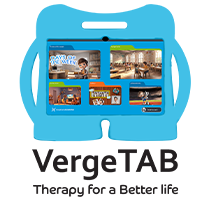How to Build a Strong Classroom Community in a Hybrid Learning Environment
11 Aug 2025

Written by
Athira. M.K
Special Educator
In today’s educational landscape, hybrid learning has become more than just a trend—it’s a necessity. This modern approach blends conventional classroom teaching with the purposeful use of technology, enriching the learning experience through interactive tools, digital resources, and innovative instructional strategies. Whether it’s using smartboards, tablets, or learning apps, technology is becoming an essential part of daily classroom routines.
As this shift takes place, one essential element must not be overlooked: a strong sense of classroom community. More than just a physical space, a classroom community is built on connection, collaboration, and mutual respect. It nurtures student engagement, motivation, emotional well-being, and a deep sense of belonging.
So how can educators ensure that every learner feels included, valued, and connected in this evolving environment—where traditional teaching meets modern technology?
Let’s explore how to build and sustain a vibrant classroom community in the era of hybrid education.
Challenges in Building Community with Technology
While technology can enhance learning, it also introduces certain community-related challenges:
- Reduced face-to-face interaction due to screen time during lessons
- Over-reliance on devices reduces interpersonal communication
- Digital divide, where some students are more technology-savvy or have better access
- Teacher discomfort or inconsistency with digital tools
Foundations of a Strong Technology-Integrated Classroom Community
Even in technology-rich classrooms, core human values matter most. A strong classroom community is built on:
- Belonging: Every student feels included and appreciated
- Connection: Relationships are built between students and teachers
- Engagement: All learners actively participate in both technology and non-technology activities
- Empowerment: Students have a voice and some choice in how they learn
Core Strategies to Build Classroom Community in Hybrid Learning
Here are five inclusive strategies that blend traditional teaching with digital tools like VergeTAB, a Digital Activity Book, to foster community.
Foster Inclusive Interactions Using XceptionalLEARNING Approaches
- Use multi-modal teaching (visual, auditory, kinesthetic) to support diverse learners.
- Begin lessons with interactive questions or role-play that involve both technology-based and group responses.
- Pair students with differing abilities to encourage peer modeling and collaboration.
Establish Routine with a Blend of Traditional and Digital Tools
- Begin the day with a consistent welcome routine—greetings, emotions check-in, or calendar work—supported by VergeTAB.
- Use the VergeTAB to reinforce concepts with visuals, drag-and-drop exercises, and sequencing tasks.
- End sessions with a reflective drawing or journal entry, using physical or digital media.
Create Shared Learning Experiences
- Assign class-wide challenges using VergeTAB, such as identifying healthy habits, sorting daily tasks, or sequencing an ADL routine.
- Share and celebrate completed activities on a classroom board—digital or physical—so all learners feel part of a collective effort.
Use Common Visual Themes Across Activities
- Establish visual consistency using symbols, icons, and color codes across both conventional and VergeTAB-based tasks.
- Visual structure helps all students—especially those with cognitive or communication challenges—feel safe and oriented.
- Reinforce class identity by using a common character, mascot, or theme (e.g., “The Learning Explorers”) in both physical classroom decor and digital pages on VergeTAB.
Extend Community Through Home-Based Controllable Activities
- Assign simple, structured tasks that children can do at home with minimal supervision, such as watering a plant, folding a cloth, or arranging toys by color.
- Link these tasks to VergeTAB follow-up activities—like sequencing the steps, matching tools used, or reflecting on how they felt doing it.
- Allow students to share their home activity experiences during class—verbally, through a picture, or by showing what they did via VergeTAB illustrations.
How VergeTAB Supports Community Building
It helps to unify the class experience by:
- Providing interactive visual content that’s accessible to all learners
- Allowing teachers to customize and assign tasks according to ability levels
- Enabling shared activities that bring the group together—such as matching, sorting, or storytelling sequences
When every child engages with the same tool at their level, they feel part of the same learning world.
A Day in a Hybrid Classroom with VergeTAB
- Morning: Circle time with calendar and emotions board (projected and printed), followed by a group story with picture sequencing
- Midday: Hands-on activity using real objects, then digital follow-up via Verge TAB sorting or matching task
- Afternoon: Reflection time—students draw or choose symbols about their day on VergeTAB, and share aloud or through visuals
Result? Engagement, inclusion, and a community that learns together—regardless of how content is delivered.
Conclusion
Building a classroom community in a hybrid learning model is achievable—when technology becomes a bridge, not a barrier. With thoughtful use of XceptionalLEARNING methods and tools like the VergeTAB, educators can create spaces where connection, collaboration, and joy thrive.
Let technology enhance, not replace, the heart of teaching: human connection.
“In a hybrid classroom, community isn’t just about proximity—it’s about purpose. VergeTAB helps bring learners together, wherever they are. Contact us to see how it can transform your sessions.”


